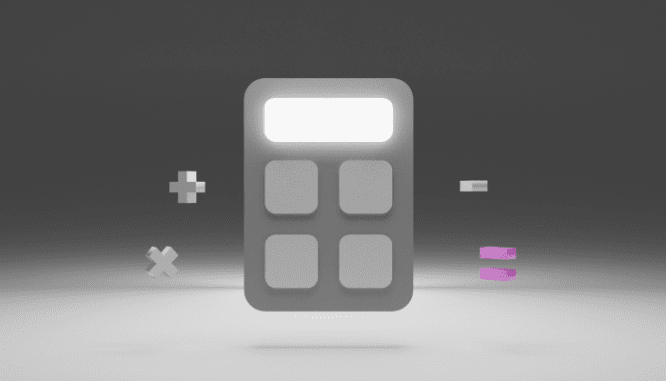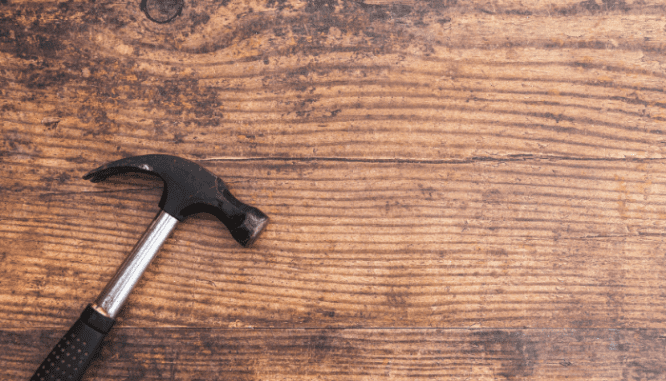Real Estate Return on Investment: What It Is and How to Maximize It
- Published on
- 5-6 min read
-
 Syndie Eardly Contributing AuthorClose
Syndie Eardly Contributing AuthorClose Syndie Eardly Contributing Author
Syndie Eardly Contributing AuthorSyndie Eardly is a veteran journalist and legal reporter with more than 20 years’ experience, writing for the real estate, mortgage and title insurance industries. She has helped launch several online publications, including DoddFrankUpdate.com, which was launched after the Great Recession to cover the many legislative efforts that followed. Syndie resides in Cleveland, Ohio, where she enjoys the lively restaurant scene, spending meditative time on the beautiful shores of Lake Erie, and hiking in the Emerald Necklace and Cuyahoga Valley National Park.
Most people in the market for property are simply looking for a place to live. But if you have higher aspirations for the money you are putting into a property, you may want to consider becoming a real estate investor.
But wait! Before you jump in with both feet, you must consider what the risks and the paybacks are going to be. In other words, what’s your return on investment (ROI), and how do you assess the ROI based on your particular investment strategy?
We asked two real estate and investment professionals to offer tips for discerning your ROI on various real estate investment scenarios.
Jodi Steinberg, a senior residential real estate agent in Kansas City with four decades of real estate experience, details specific client experiences with investment properties, and Nick Pietrocola, financial advisor and Vice President with Ameriprise Financial in Cleveland, Ohio, shares the advantages of real estate investment trusts as an alternative strategy. Let’s see what they had to say!

Calculating real estate return on investment
There are a lot of ways to calculate real estate ROI, but as with any investment, the basic formula is “gain minus cost” — or how much you earn versus what you pay to invest in the property.
Stock investments can provide a simple example of ROI. If you invest $1,000 in the stock market and then five years later sell your shares for $1,500, your net profit is $500. Your $500 gain divided by your original investment of $1,000 is 0.50, or 50% ROI (10% per year).
Calculating ROI for rental or fix-and-flip properties is far more complex, with many variables to consider. Whether you are considering what to buy and when to buy, or whether to flip or lease, working with an experienced real estate agent can help you maximize your ROI and avoid possible pitfalls that could negatively affect your return.
Factors to consider when maximizing your ROI
Steinberg works with a variety of real estate investor clients, including those who buy for the purpose of fixing up and reselling, and those who intend to rent out homes, condominiums, or apartments.
The challenge for every investor, according to Steinberg, is to maximize the return on their investment. For a hands-off real estate investment, such as REITs (real estate investment trusts), this can be relatively straightforward. But when you get into strategies like buy-and-hold (also known as becoming a landlord) or fixing and flipping, there are many more variables to consider.
“When working with any type of investor, I feel like my first job specifically is to make sure that my client buys right, so when the time comes to sell, they can sell at a profit,” she explains.
This is a bit more critical for a fix-and-flip that you intend to sell quickly, but it is also essential for a rental property because you will also benefit from the accrued value of the property over time.
Steinberg first encourages her clients to consider location based on their investment strategy.
If you are intending to buy a house for the purpose of fixing it up and selling it, then it would be helpful to buy a fixer-upper in a neighborhood that is on the upswing so that you can hopefully find a buyer willing to pay a premium price for a renovated property.
“If you have a flipper who doesn’t know what they’re doing, and they buy way too high, they may not make much money on it,” Steinberg says.
Along the same lines, if you are trying to rent the property, you have to ensure the rental income you need to cover your investment is competitive in the location where you intend to buy, Steinberg says.
“It seems ridiculous to say — but location, location, location, is true,” she says.
ROI for rental properties
Your rental return on investment will depend on the price of homes where and when you buy, as well as the fair-market rental rates in the area. Buying wisely and fixing up prudently in desirable areas could generate the greatest ROI.
Calculate initial purchase
First, you will want to consider how much you intend to put down to buy the property and how much your monthly mortgage payments will be. Remember, a larger down payment means lower monthly mortgage payments.
Determine how much to invest
Secondly, consider how much you want to invest to fix up the property. This is where it can get tricky, Steinberg says.
She has one client who often invests heavily in the properties he purchases.
“He’ll paint everything and put in new cabinets,” she says. “He is against any carpet in rental properties, which I agree with. It costs a little bit more money upfront, but he puts hardwood [flooring] in everywhere, and tile in the wet areas. If you have renters for a couple of years and they have kids and dogs, the carpet will need to be replaced. But if you have hardwoods, they hold up over time.”
She said her client also makes sure the electrical system is up to date, as well as the HVAC and roof.
“He wants very little trouble after people move in,” she notes. “He gets good rent because he has a specific high-end area where he purchases.”
The upside to making a substantial investment in the property, Steinberg says, is that her client can charge a premium in monthly rent. That said, although he gets a good return on his investment, it takes him a few years to earn that return because he puts so much in up front.
To maximize ROI on more modest properties, she advises looking for homes that are in good condition, requiring only a minimum investment for cosmetic updates and repairs.
Analyze rent income potential
The third thing to consider is how much you can charge to rent the property. As Steinberg noted, this is often dependent on what the going rate is in the area you are targeting.
If you are purchasing a property with multiple units, you may also want to investigate the current tenant situation. Having renters in place will provide immediate income for your investment. If not, at least do the research to find out what renters paid in the past or are currently paying in the area.
Estimate additional and ongoing expenses
In addition to the initial investment in your rental property, there will be ongoing expenses you will need to take into account when calculating your ROI. Expenses to consider include:
- Home maintenance and repairs
- Property management if you choose to outsource it
- Expenses involved in finding tenants
- Carrying the mortgage when your property is without a tenant
Rental ROI calculation
ROI can be calculated in diverse ways. Here are general examples based on annual income and expenses.
Cash purchase
When you buy a house with cash, your upfront investment is heavy, but you won’t have the monthly expense of a mortgage. Let’s use this simplified example:
- You paid $450,000 for a rental property with two rental units
- Your rental income is $48,000 per year
- Your annual taxes, insurance, and maintenance are $10,000
- ROI = ($48,000 – $10,000)/$450,000 = 8.4%
Mortgage purchase
With a mortgage, you’re putting much less money down upfront, but you’ll have monthly mortgage payments to make to your lender. Here’s an example of ROI on a mortgage property purchase.
- You took out a mortgage on a rental property with two rental units for $450,000
- Your rental income is $48,000 per year
- Your annual taxes, insurance, maintenance, and mortgage payments are $34,000
- ROI = ($48,000 – $34,000)/$450,000 = 3%

ROI for fix-and-flips
Your return on investment for a fix-and-flip will also depend on the price of the home you buy.
Calculate initial purchase
As with a rental property, you will first need to decide how much you intend to put down to buy the property, how much of a monthly mortgage payment you can afford, and how long you will have to make those payments until the house is resold.
Since you are intending to sell the home in short order, it is important to work with your real estate agent to assess the market carefully.
How quickly are homes selling? Are prices increasing, plateauing, or decreasing? Before you decide how much you will invest in fixing up the property, you must have an idea what you will be able to sell it for to ensure a healthy ROI.
Determine how much to invest
Now that you have a realistic resell price in mind, you can decide how much you can afford to invest in fixing up the property and still make a profit.
You may want to enlist a general contractor to help you determine the total cost of all intended repairs.
“I have an investor who bought a townhome in a great area — a golf course community,” Steinberg says. “I was uncomfortable with his decision to purchase it because it had foundation problems. I said, ‘Look, you’re going to have to put a large amount into it to get this fixed, plus what you intend to do to the inside.’
“He went ahead with his plan anyway. He was intending to flip it, but the property sat on the market for a while. He ended up renting it, but unfortunately for quite a bit less than he had hoped to gain.”
And finally, be realistic about how long it will take to make those repairs. You will be making mortgage payments for the duration of the repairs and until the house is placed on the market and sold.
Fix-and-flip ROI calculation
ROI generally is a fairly simple calculation for a fix-and-flip, although the length of time it takes to complete the renovations could make this calculation a little more complicated.
Cash purchase
Let’s say you’re paying cash for a fix-and-flip — this means you won’t have to make those monthly mortgage payments.
- Initial investment: $210,000 (cash purchase and closing costs)
- Renovation costs: $120,000
- Total investment: $330,000
- Sales price: $400,000 – $330,000 = $70,000 profit
- ROI = $70,000/$320,000 = 22%
Mortgage purchase
With a mortgage purchase, the amount of time you hold onto the flip can really affect your bottom line, especially if you used a high-interest loan to buy it in the first place.
- Initial investment: $40,000 (down payment and closing costs)
- Mortgage payments, taxes, and insurance during renovation: $17,000
- Renovation costs: $120,000
- Total Investment: $177,000
- Sales price $400,000 – ($170,000 mortgage payoff +$177,000) = $53,000 profit
- ROI = $53,000/$347,000 = 15.3%

How to maximize your ROI
For both rentals and fix-and-flips, there are ways you can maximize your ROI.
To begin with, consider a more modest property in the neighborhood, rather than the most expensive. It’s more challenging to get the rent price you need if you buy a property in the top range, or to get a reasonable profit when you are trying to sell the most expensive house on the street.
In addition:
- Consider properties that only require cosmetic repairs to minimize your investment.
- If renting, choose a multi-family property with four or fewer units, and live in one of them.
- Do as much of the work yourself as you can to cut down on labor costs.
- Move forward quickly on repairs and renovations to minimize time off the market or time without a tenant.
Steinberg notes that one of her clients asks her to negotiate a provision in the contract that allows him to start working on the house immediately if it’s vacant.
“We like to get the seller to agree to it so that on day one, he can list it for rent, and get somebody in there quickly. He doesn’t want it sitting empty,” she adds.
Real estate investment trusts
Real estate investment trusts, or REITs, are yet another way to invest in real estate.
A REIT owns and manages a portfolio of properties for investors. These portfolios can offer a single vertical — for instance all apartment buildings or all retail sites — or they can carry a mix of property types.
Pietrocola says one advantage of investing in a REIT as opposed to directly owning property is that REITs can be more predictable.
“We look at it as an alternative investment,” Pietrocola explains. While REITs may generate positive returns, “it’s very passive compared to owning rental property.”
“With a REIT, I can have real estate investment without worrying about repairs. However, some people prefer direct ownership because they have a tangible asset and a tax benefit that they wouldn’t have with a REIT.”
Pietrocola says publicly traded REITs pay in two ways: either a dividend or a return of capital. If the value of the properties in the REIT also appreciates in price, that adds to your total return, he explains.
But your ROI depends on several factors, according to Pietrocola, and it’s wise to study the market and solicit expert advice before deciding where to invest.
“Prior to the real estate crash of 2007 to 2009, REITs had generated about 9% a year,” Pietrocola notes. “That number dipped to a little over 7% over the long term. In the past few years, it has been tracking to the double-digits, as high as 14% or 15% in some cases. Now it is starting to get skewed back down the other way due to the pandemic.”
Pietrocola says your ROI will depend on the individual REIT — not only the type of properties in the REIT, but how that REIT is structured. He recommends studying the Morgan Stanley REIT index to get an idea of the range of REITs available.
Because of the current volatility related to the recent pandemic, including the change in shopping habits and work-from-home trends, he says that investment-class real estate may well struggle for the near term.
“I have talked to a few people locally who are in that business,” Pietrocola explains. “One person told me just to keep tenants in their buildings, they have had to renegotiate everything at 50 cents on the dollar. Especially in retail, I don’t expect those dividends are going to be very steady for a while.”
Crowdfunding and peer-to-peer lending
One of the most recent developments in real estate investment is the advent of crowdfunding and peer-to-peer (P2P) lending.
Both strategies offer a way for smaller investors to have an entrée into larger real estate projects through investment platforms.
P2P lending platforms match up borrowers with investors. According to Financial Samurai, the returns on P2P lending in the real estate industry have been in the range of 7% to 8%. For the borrowers, it often allows them to access investment funds at somewhat lower rates.
Crowdfunding platforms are often equity-based, meaning you become a part owner of the project. Some crowdfunding platforms also allow multiple investors to fund mortgages secured by real estate for a host of different projects, from fix-and-flip homes to larger commercial projects.
There are more than 75 crowdfunding platforms in the U.S. specifically designed for real estate investors.
As with all investment strategies, it is critical that you work with a professional financial advisor and do your homework thoroughly before investing.

Final thoughts
If you decide to become a real estate investor, it is important to understand what your appetite is for the arduous work of fixing up and managing properties, versus the hands-off form of investment characterized by REITs and crowdfunding.
If you do favor ownership, Steinberg highlights the importance of working with a knowledgeable real estate agent.
“If your agent has the credentials, has done this for a good amount of time, and you trust them, then listen to them,” she says.
“Let them pull all the comparables. Let them give you their thoughts on where the neighborhood is going, the quality of the schools. It’s important to listen to the person that does it day in and day out. Let them do the research and the legwork for you. We love what we do. So let us do it.”
No matter what kind of real estate strategy you choose, make sure you do plenty of research up front. And as Steinberg advises, getting an experienced and trusted real estate agent to assist you in the process will go a long way to help ensure a healthy ROI.
Header Image Source: (Nicolas Solerieu / Unsplash)
